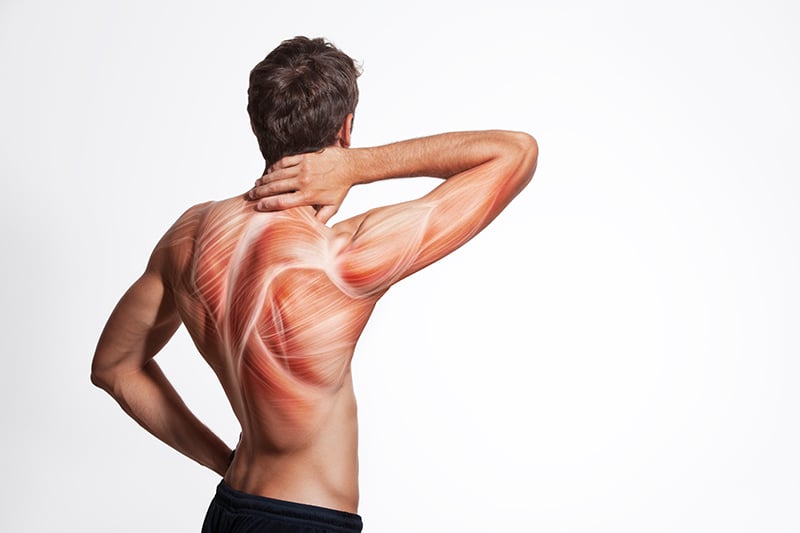Striated muscles are organs that weigh up to 40% of one’s body weight and include up to 696 bundles, which must work all the time. It is found that about 30% of the general population experiences pain caused by muscles. This is a pain that is encountered in everyday life in working and doing various activities.
Muscle Pain Symptoms
Pain from muscles can vary, such as:
- Severe pain to the point that the body part cannot be moved at all
- Heavy pain
- Sharp pain
- Easily fatigued
- Tight pain
- Pain or sharp ache when reaching out or lifting an arm in some postures
- Pain when twisting, like reaching for something high, twisting to reach something far from the body
and so on
Such pain might not occur all the time and can come and go, like feeling stiff and difficult to move when waking up in the morning or very fatigued in the evening. Some people may feel a slight numbness in the painful area, making them fear paralysis.
Causes of Muscle Pain
Causes or triggers that make the muscles around the shoulder contract or tense
- Abnormal postures, such as hunched shoulders
- Straining by using that muscle bundle to stand still for too long beyond the capability (strength, endurance) of those muscles, such as sitting and writing for many hours, sitting and working on a computer all day, etc.
- Using unsuitable desks and chairs, disproportionate, too high or too low tables, computer keyboards, or mouse placed too high, causing to lift shoulders at all times, stretching to reach the mouse placed far away
- Conditions or diseases that cause muscle tension and pain, such as abnormal thyroid function, malnutrition or inadequate intake, especially lack of vitamins, degenerative cervical spine pressing on the nerve of that shoulder, etc.
- Chronic illness conditions, such as coronary artery disease
- Post-thoracic surgery conditions, such as heart surgery, lung surgery
- Severe muscle injuries from accidents
- Stress conditions, whether physical or psychological
It is found that muscles causing symptoms will have tender points, which sometimes can be felt like a lump or like there is a tight rope in those muscles. When pressing a finger on the tender points, a short twitching can be seen. Often found alongside is stiffening, constriction, moving in different directions not fully (in cases that are not severe), such as frozen shoulder, stiff back, difficulty bending, etc.
Muscle Pain Treatment
Treatment must be done together as follows:
- In the early stages of severe pain, pain relievers and muscle relaxants are often prescribed.
- Relieving the tender points, which can be done in many ways, namely:
- Using an injection needle to release, anesthesia can be used to prevent pain during the procedure.
- Using a fine needle to release points
- Spraying with cold while stretching the muscle
- Massage, such as acupressure massage, kneading massage, can also be used with massage creams. For those having pain or fatigue around the shoulder, try to find the tender points themselves. If it’s not severe, try to release points by using the thumb to knead on the indicated spots in these muscles. After massaging, perform some stretching exercises for those muscles. Applying a cold compress for about 20 minutes is also an option. Taking some Paracetamol might help alleviate the pain significantly. If unsure, then consult a doctor.
- Using tools and techniques of physical therapy, which will be seen in the exhibition “Various Ways to Relieve Pain,” such as ultrasound, laser therapy, TENS, etc.
3. Rehabilitation to make those muscle bundles flexible and increase their strength and endurance for tasks in daily life through muscle stretching exercises, followed by resistance training when the pain decreases later.
4. A critical aspect that cannot be ignored is correcting, changing, and adjusting various postures in daily life appropriately, such as avoiding postures with hunched or rounded shoulders, as well as changing or arranging furniture, tools, and utilities around to accommodate correct postures, to prevent muscle tension, and to avoid using muscles inappropriately. Changing postures frequently, every 15 – 20 minutes, to allow tensed muscles to relax a bit.

